Today’s Current Affairs: 30th March 2024 for UPSC IAS exams, State PSC exams, SSC CGL, State SSC, RRB, Railways, Banking Exam & IBPS, etc
Table of Contents
United Nations High Commissioner For Refugees : Study

As per the United Nations High Commissioner for Refugees (UNHCR), over 4,500 Rohingya refugees set off across the Bay of Bengal and the Andaman Sea in 2023.
- United Nations High Commissioner for Refugees protects refugees worldwide and facilitates their return home or resettlement. Headquarters: Geneva, Switzerland
- It was established by the General Assembly of the United Nations in 1950 in the aftermath of the Second World War to help the millions of people who had lost their homes.
- It is a global organization dedicated to saving lives, protecting rights and building a better future for people forced to flee their homes because of conflict and persecution.
- It was awarded Nobel Peace Prizes in 1954 and 1981.
- It started Nansen Refugee Award in 1954 for recognition of outstanding service to the cause of refugees, displaced or stateless people.
- Rohingya refugees are a Muslim minority ethnic group with their roots in the Arakan kingdom in Myanmar.
- According to the Council on Foreign Relations notes that Rohang derives from the word ‘Arakan’ in the Rohingya dialect and ga or gya means from.
- They are culturally and religiously distinct from the majority Buddhist population in Myanmar and speak a Bengali dialect which is different from the common Burmese language.
- Myanmar has refused to recognise them as an ethnic group, denying them citizenship since 1982.
Kalam-250 : ISRO

Skyroot Aerospace, the leading space-tech company, has successfully test-fired the Kalam-250 at the propulsion testbed of the Indian Space Research Organisation (ISRO).
- Kalam-250 is a stage-2 of Vikram-1 space launch vehicle.
- It is a high-strength carbon composite rocket motor, which uses solid fuel and a high-performance Ethylene-Propylene-Diene terpolymers (EPDM) thermal protection system (TPS).
- The stage includes a carbon ablative flex nozzle along with high-precision electro-mechanical actuators for thrust vector control of the vehicle, aiding in achieving the desired trajectory.
- The second stage of Vikram-1 will play a crucial role in the ascent of the launch vehicle, propelling it from the atmosphere to the deep vacuum of outer space.
- Vikram-1 Rocket is named after the father of India’s space programme, Vikram Sarabhai and is a multi-stage launch vehicle with a capacity to place around 300 kg of payloads in low-earth orbit.
India Employment Report 2024: ILO
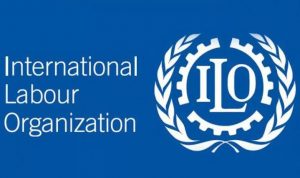
The Institute for Human Development (IHD) and International Labour Organisation (ILO) have released a report titled- ‘India Employment Report 2024’, which highlights that India’s youth continue to grapple with soaring Unemployment rates.
Highlights of the Report:
- India’s youth account for almost 83% of the unemployed workforce and the share of youngsters with secondary or higher education in the total unemployed has almost doubled from 35.2% in 2000 to 65.7% in 2022.
- Youth employment and underemployment surged between 2000 and 2019, with educated youths experiencing significantly higher levels of joblessness.
- The Labour Force Participation Rate (LFPR), Worker Population Ratio (WPR) and the Unemployment Rate (UR) showed a long-term deterioration between 2000 and 2018 but witnessed an improvement after 2019.
- Overall, wages have remained low. As much as 62% of the unskilled casual agricultural workers and 70% of such workers in the construction sector at the all-India level did not receive the prescribed daily minimum wages in 2022.
- India is expected to have a migration rate of around 40% in 2030 and will have an urban population of around 607 million.
- The bulk of this increase in urban growth will come from migration.
- The pattern of migration also shows regional imbalance in the labour markets.
- The direction of migration in general is from eastern, north-eastern and central regions to southern, western and northern regions.
Food Waste Index Report 2024:
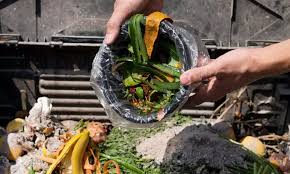
According to the Food Waste Index Report 2024, households across the globe wasted over one billion meals a day in 2022.
Highlights of the report:
- The report defines “food waste” as “food and the associated inedible parts removed from the human food supply chain”.
- ‘‘Food loss” is defined as “all the crop and livestock human-edible commodity quantities that, directly or indirectly, completely exit the post-harvest/slaughter production/supply chain up to, and excluding, the retail level”.
- It noted that in 2022, there were 1.05 billion tonnes of food waste generated (including inedible parts), amounting to 132 kilograms per capita and almost one-fifth of all food available to consumers.
- Many low- and middle-income countries continue to lack adequate systems for tracking progress to meet Sustainable Development Goal 12.3 of halving food waste by 2030.
- At present, only four G-20 countries (Australia, Japan, U.K., U.S.) and the European Union have food waste estimates suitable for tracking progress.
- Hotter countries appear to generate more food waste per capita in households, potentially due to higher consumption of fresh foods with substantial inedible parts and a lack of robust cold chains.
- As compared to urban areas, rural ones generally wasted less food, due to “greater diversion of food scraps to pets, livestock and home composting”.
- As of 2022, only 21 countries had included food loss and/or waste reduction in their climate plans or Nationally Determined Contributions (NDCs).
Environment Protection Charge:
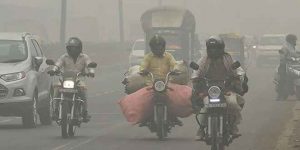
According to a CPCB (Central Pollution Control Board) report submitted to the National Green Tribunal, a significant portion of the Environment Protection Charge (EPC) and Environmental Compensation (EC) collected by the CPCB remains unspent.
- Environment Protection Charge is a fund used by the Central Board of Pollution Control (CPCB) to provide scientific inputs for improving air quality in Delhi NCR.
- The CPCB works with other institutions like IIT and NEERI under the EPC fund.
- The EPC is received as per an order of the Supreme Court (M.C. Mehta Vs Union of India Case, 1985), and for air quality improvement and related work in Delhi-NCR such as research and development activities and vehicular pollution control health impact studies and specific projects to control pollution in Delhi-NCR and Punjab.
- The CPCB also receives 25% of the environmental compensation collected by state pollution control boards.
- It also collects environmental penalties directly from polluters/defaulters in various matters.
CoViNet : WHO
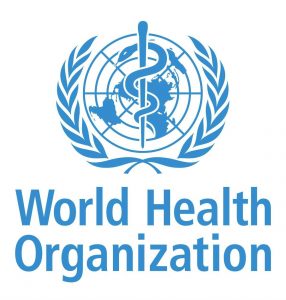
World Health Organisation (WHO) has launched a new network for coronaviruses, CoViNet.
- CoViNet is a network of global laboratories with expertise in human, animal and environmental coronavirus surveillance.
- It will identify and monitor potentially novel coronaviruses that could emerge shortly.
- The network will now have animal health and environmental surveillance and timely risk assessment to feed WHO policies and protective measures.
- In low- and middle-income countries, CoViNet will support the building of more laboratories to monitor MERS-CoV and novel coronaviruses of public health importance.
- Data generated through CoViNet’s efforts will guide the work of WHO’s Technical Advisory Groups on Viral Evolution (TAG-VE) and Vaccine Composition (TAG-CO-VAC).
- It currently comprises 36 laboratories from 21 countries in all six WHO regions.
- Three Indian laboratories namely; the Council of Scientific and Industrial Research-National Environmental Engineering Research Institute, the Indian Council of Medical Research-National Institute of Virology in Pune, and the Translational Health Science and Technology Institute are part of this network.
India TB Report – 2024:
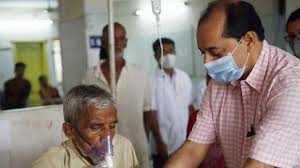
India TB Report 2024 was released by the Union Health ministry on Wednesday.
- India’s contribution to the global burden is 27%, which is down one percentage point from the previous year’s 28%.
- The gap between the estimated number and actual cases of tuberculosis (TB) is closing, according to the India TB Report 2024.
- This is an important marker as the “missing cases” are assumed to not have received treatment, continuing to spread the infection to others.
- There were only 2.3 lakh missing cases in 2023, as compared to 3.2 lakh the year before, the report states.
- This gap has been reducing over the years, especially with the government’s Ni-kshay portal tracking all TB patients.
- According to the report, the majority of the TB cases are still reported by the government health centres, even as there has been an uptick in notifications by the private sector.
- Nearly 33% or 8.4 lakh of the 25.5 lakh cases reported in 2023 came from the private sector.
- To compare, only 1.9 lakh cases were reported by the private sector in 2015, the year considered to be the baseline by the programme that is geared towards the elimination of the disease.
- The report shows that India reached its 2023 target of initiating treatment in 95% of patients diagnosed with the infection.
- It says 58% of those diagnosed were offered a test to check whether their infection was resistant to the first line drugs, an increase from 25% in 2015.
- The report recommends drug susceptibility treatment to ensure that people who may have drug resistant TB are able to access e therapies from the get go instead of being treated with the first-line therapy initially.
GYPS Vultures:

Moyar valley is the biggest nesting colony of critically endangered Gyps vultures in the wild.
- Moyar Valley, also known as Maayar Valley, stretches approximately 85 kilometers from Gudalur through the core area of the Mudumalai Tiger Reserve within the Nilgiri Biosphere Reserve in Tamil Nadu.
- The Gyps vultures, including the White-rumped Vulture (Gyps bengalensis), Indian Vulture (G. indicus), and Slender-billed Vulture (G. tenuirostris), have faced rapid population declines since the mid-1990s in India.
- These vultures are endemic to South Asia and play a crucial role in the ecosystem by scavenging carcasses.
- The primary cause of their decline was poisoning due to the widespread veterinary use of the non-steroidal anti-inflammatory drug (NSAID) diclofenac in cattle.
- As a result, all three species were listed as “Critically Endangered” on the IUCN Red List.
Global Biofuel Alliance (GBA):
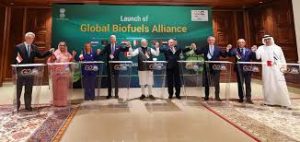
GBA was launched by India along with the leaders of Singapore, Bangladesh, Italy, USA, Brazil, Argentina, Mauritius and UAE.
Global Biofuel Alliance (GBA)
- It aims to serve as a catalytic platform, fostering global collaboration for the advancement and widespread adoption of biofuels.
- It will act as a central repository of knowledge and an expert hub.
- Its members are Argentina, Brazil, Canada, India Italy, South Africa, USA, Bangladesh, Singapore, Mauritius, UAE, Iceland, Kenya, Guyana, Paraguay, Seychelles, Sri Lanka, Uganda, and Finland. It also includes international organizations including the World Bank, Asian Development Bank, World Economic Forum, International Energy Agency, etc.
- GBA will ensure a stable supply of eco-fuels and create a virtual marketplace connecting industries, countries, and tech providers, enhancing demand-supply mapping.
- It will facilitate the development, adoption, and implementation of internationally recognized standards, and regulations to incentivize biofuels adoption and trade.
- International Energy Agency (IEA) estimates that global sustainable biofuel production would need to triple by 2030 to put the world’s energy system on track towards net zero emissions by 2050.
- The transport sector is responsible for approximately one-quarter of greenhouse gas emissions.
- It will help raise awareness about biofuels’ role in reducing greenhouse gas emissions.




